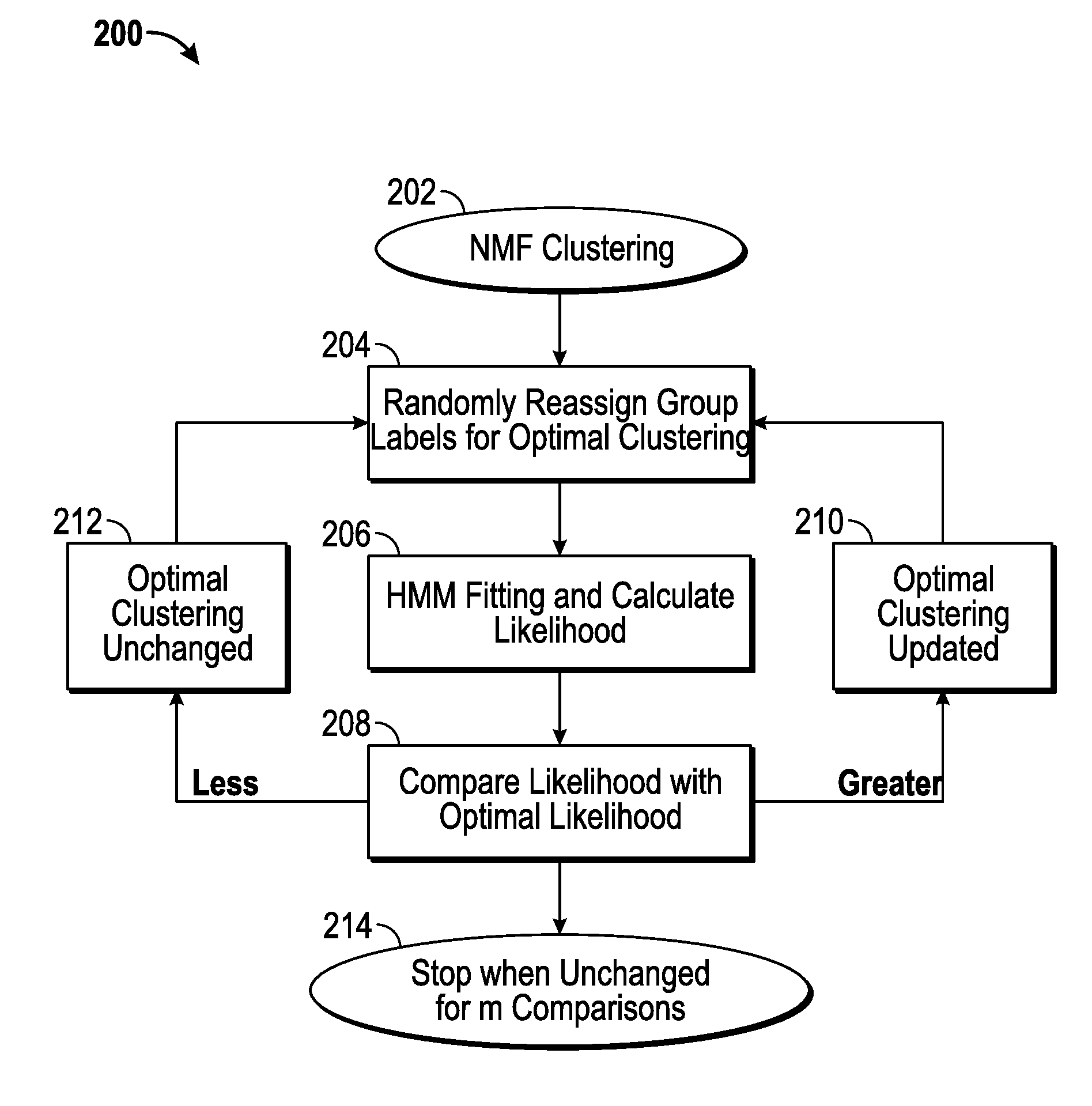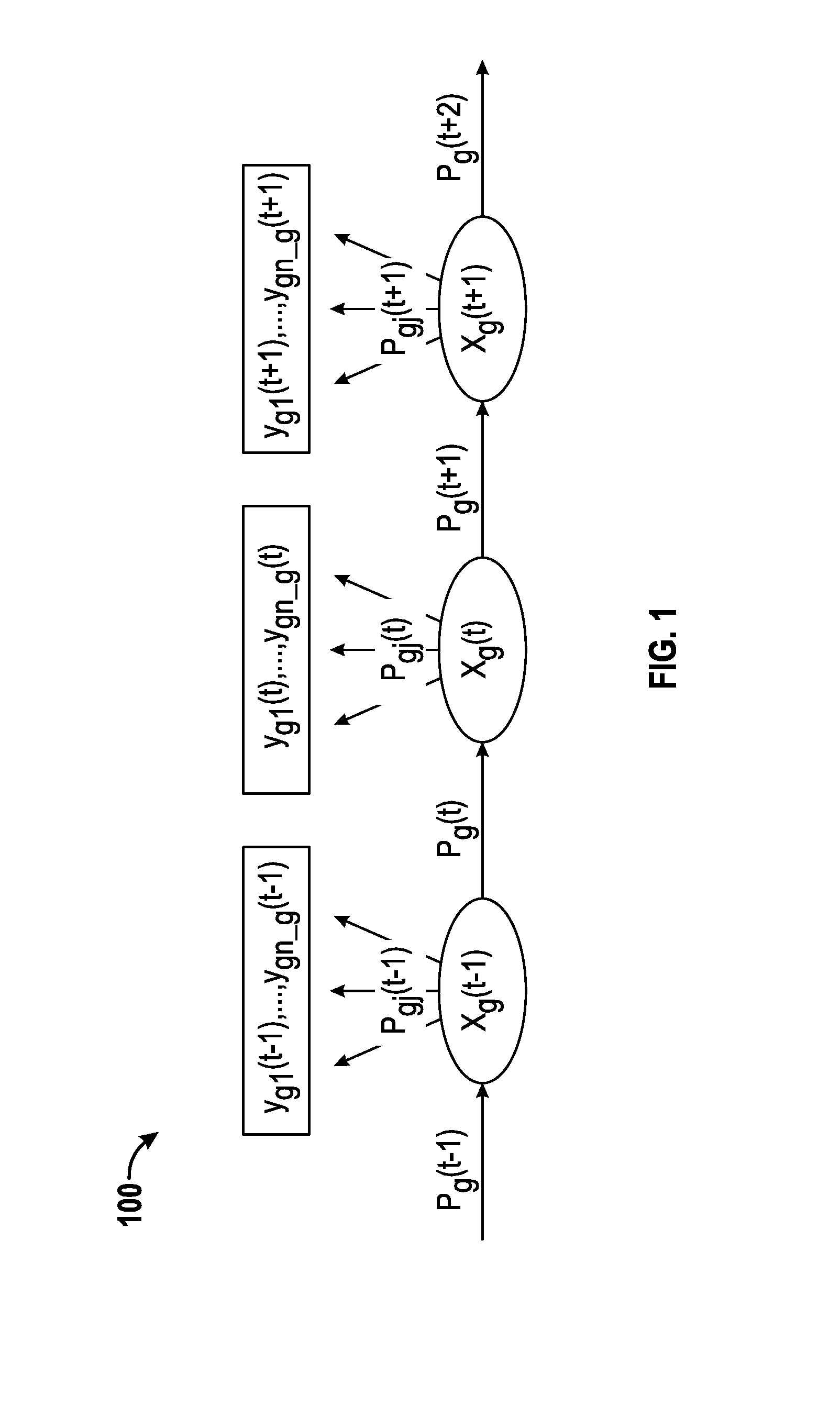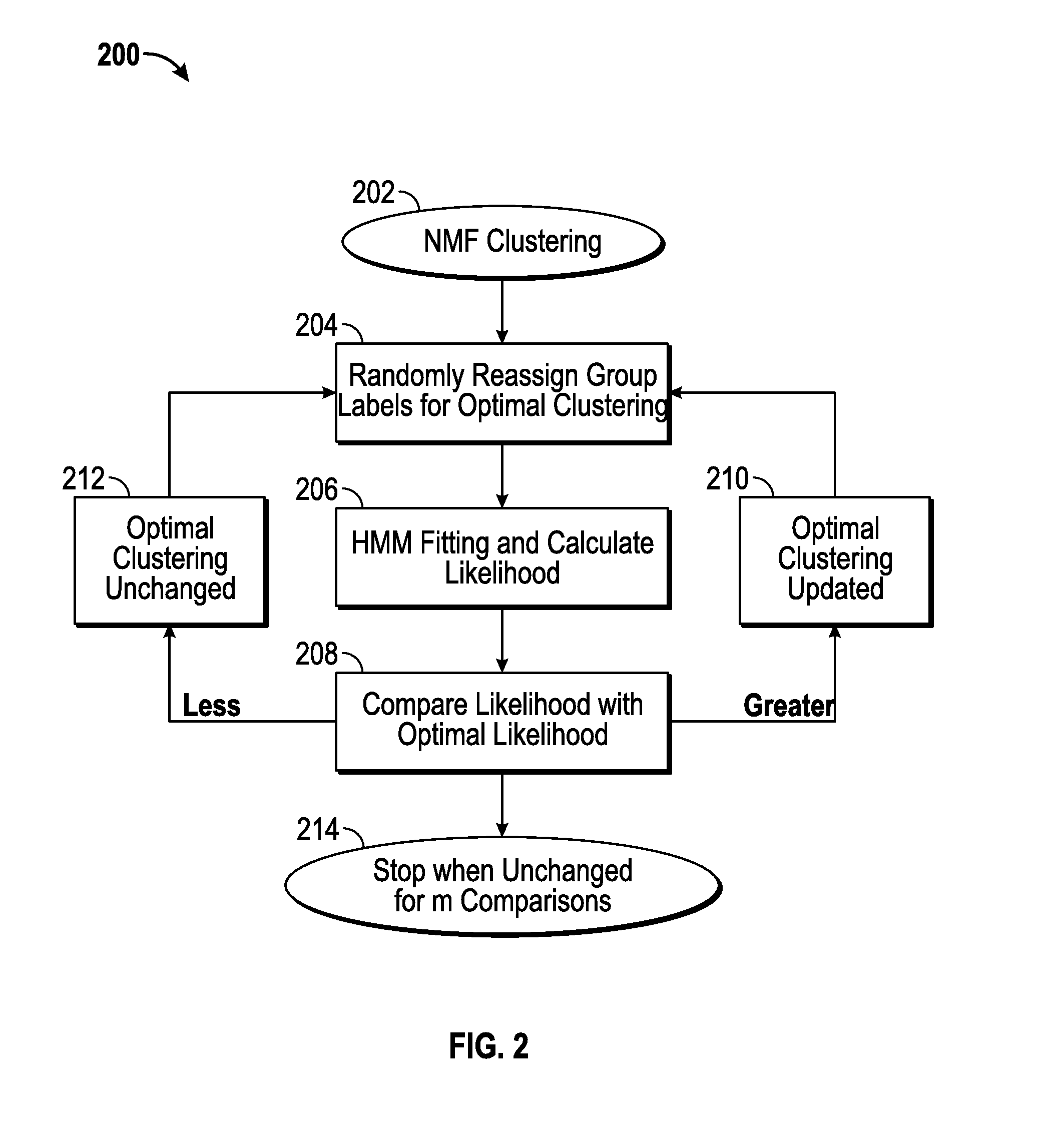Clustering copy-number values for segments of genomic data
a genomic data and copy-number value technology, applied in the field of genomic data, can solve the problem that methods fail to account for the spatial correlation between snps, and achieve the effect of improving the clustering of copy-number values
- Summary
- Abstract
- Description
- Claims
- Application Information
AI Technical Summary
Benefits of technology
Problems solved by technology
Method used
Image
Examples
Embodiment Construction
Overview
[0024]Disclosed herein are a data pre-processing procedure, comprising a hidden Markov model (HMM) and, in one embodiment, the model fitting for a cluster of aCGH samples; a machine-learning algorithm that uses HMMs to cluster tumors; and a fast implementation for the clustering algorithm and the approach to find the optimal number of groups.
[0025]A fast clustering algorithm has been developed having particular applicability to the identification of tumor subtypes based on DNA copy number aberrations. Recent advancements in array comparative genomic hybridization (aCGH) research have significantly improved tumor identification using DNA copy number data. A number of unsupervised learning methods, such as hierarchical clustering and non-negative matrix factorization (NMF), have been proposed for clustering aCGH samples. Nonetheless, these current methods assume independence between aCGH markers, while the markers are highly spatially correlated. The correlation between marker...
PUM
 Login to View More
Login to View More Abstract
Description
Claims
Application Information
 Login to View More
Login to View More - Generate Ideas
- Intellectual Property
- Life Sciences
- Materials
- Tech Scout
- Unparalleled Data Quality
- Higher Quality Content
- 60% Fewer Hallucinations
Browse by: Latest US Patents, China's latest patents, Technical Efficacy Thesaurus, Application Domain, Technology Topic, Popular Technical Reports.
© 2025 PatSnap. All rights reserved.Legal|Privacy policy|Modern Slavery Act Transparency Statement|Sitemap|About US| Contact US: help@patsnap.com



